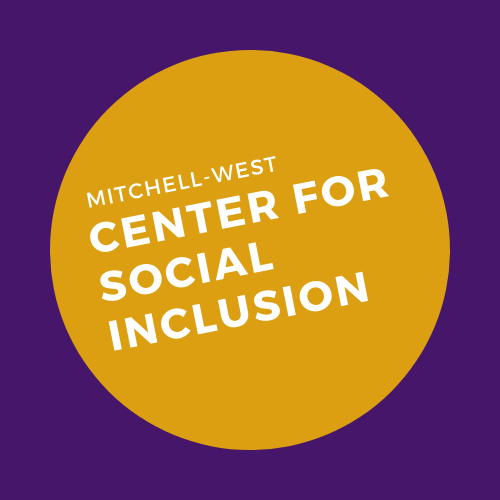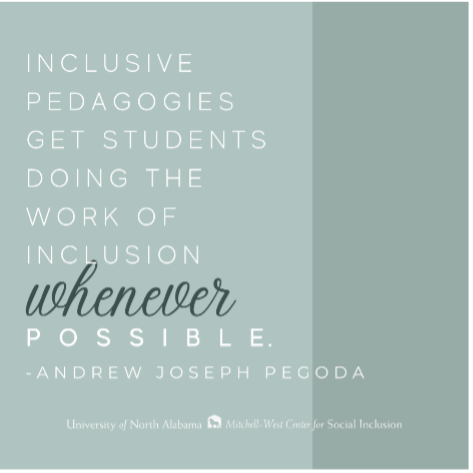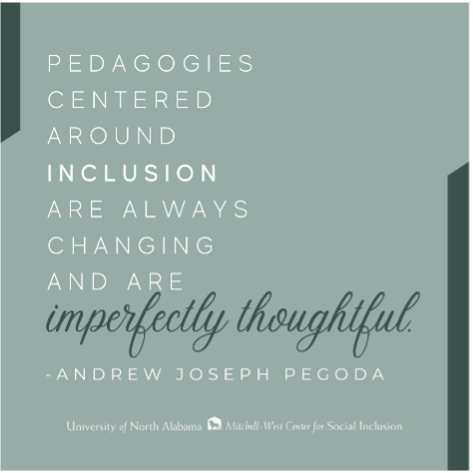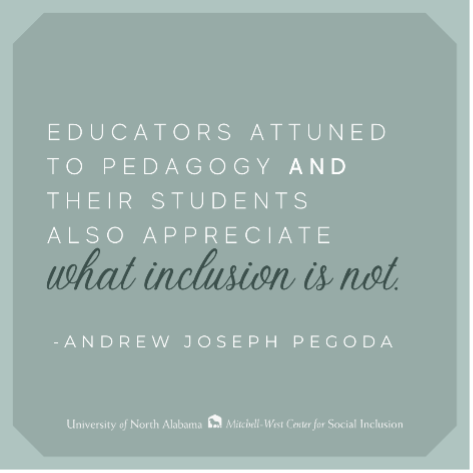Inclusive Teaching Doesn’t Mean Including “Everyone”
Because if we aim to include “everyone” we’re overlooking the very lives and dynamics that make inclusive pedagogies not just necessary but meaningful and rewarding. Aiming to include “everyone” is an equivalent of the ever-popular “I-don’t-see-color” when talking about race.
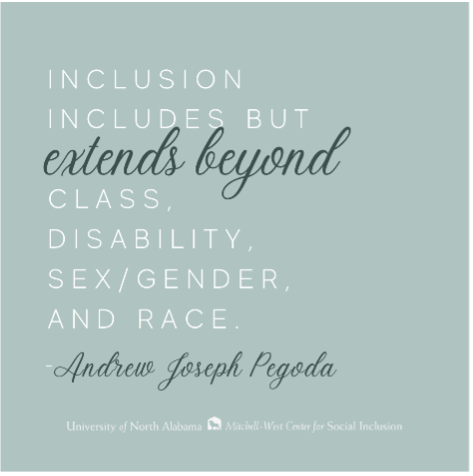
Inclusion includes but extends beyond class, disability, sex/gender, and race.
While these demographic categories can often be among the most visible, they are far from the only ones that substantially impact classrooms and that need acknowledgments. Other categories of experience include addict, adopted, asexual, disowned, divorcee, father, grandmother, Jewish, parent, parolee, survivor of cancer, survivor of rape, and survivor of suicide. The possibilities go on. Inclusive pedagogies remember that each individual enters the classroom with multitudes of experiences and identities. Such environments are ready for the student who, during the semester, discovers they are trans*.
Inclusive teaching practices are also aware — aware as possible — of human bias. Studies have shown that if someone is wearing blue, we’re more likely to see them as “strong” and “brave,” compared to someone with pink, who we’ll see as “shy” and “unsure.” Other studies, see Delusions of Gender, have shown that if students have to bubble in “male” or “female” on a test, people who bubble in “female” do dramatically worse than those who selected “male.”
Inclusive pedagogies get students doing the work of inclusion whenever possible.
When it comes to inclusion, the first — and most important — step is to get students communicating with each other about the material whenever possible. (I don’t say “talking” because not everyone talks.) It’s riskier than lecturing because of the unknown directions conversations will travel, but it will result in increased learning and increased inclusion. Students are empowered and motivated when they have opportunities to exchange ideas and directly engage in the discourses. It takes work to make sure every student shares — privileged students tend to speak over others, even without realizing it. It also takes work to help students balance their personal experiences with data and with the experiences of others. The article “Leaning In: A Student’s Guide to Engaging Constructively With Social Justice Content” is excellent at helping students learn how to learn and appreciate others.
Additionally, recognizing that students can occasionally be oppressive is necessary, especially when their professor is a woman, is a person of Color, or is disabled. For example, several semesters ago during introductions, I told a class about my own experience with disability and medical problems, which include having had six surgeries, taking almost two dozen medications, and dealing with migraines and other chronic pain. A student asked: “How often do you cancel class on us because you’re sick?” (My response: “I’ll be here every class, like always.”)
And reaching every student, every semester is impossible — the work of inclusion is shared by students and professors, even by the broader institution and community.
Pedagogies centered around inclusion are always changing and are imperfectly thoughtful.
Students can’t be included if they are changing with the world while curriculums remain static or worse, irrelevant. Additionally, what works in classes with 450 students won’t work in classes with 30. When professors work toward fostering environments conducive to inclusive teaching, they constantly read about the latest pedagogical practices and then actually try new techniques after due consideration. They ask students for feedback and admit our mistakes. Most importantly, every assignment, every assigned page of every text has deliberate purposes. Every moment of the class experience is meaningful.
Imperfect change also includes learning with students and seeing the syllabus as a living document. For example, I’ve had a class request to read an additional book, a class wanting to read a different book than one I had chosen, and many classes request additional topics.
I should emphasize that inclusive pedagogies cannot happen without the requisite academic freedom for the instructor of record to make decisions about every aspect of courses beyond basic objectives and learning outcomes.
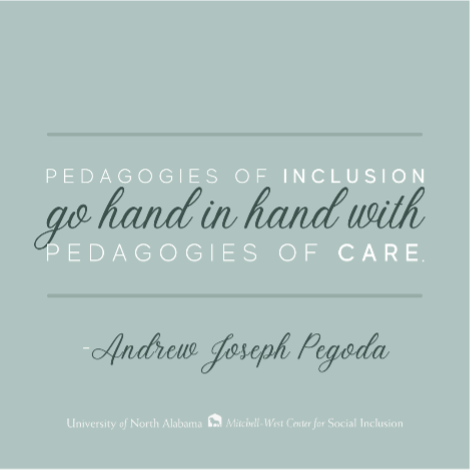
Pedagogies of inclusion go hand-in-hand with pedagogies of care.
Including students requires caring about them as individuals. Professors should want to get to know their students. Having lunch with students is one of my favorite activities! In turn, professors need to let their students know them as people, too. Caring also includes understanding that students often come to us with a great deal of trauma; the classroom can even trigger trauma. Trauma informed pedagogies recognize that the student who misses class or submits work late likely has struggles beyond college and might benefit from alternative assignments or greater flexibility. Trauma informed pedagogies recognize that when a student shares that their grandmother subjected them to a public beating in Nigeria for being queer, the people listening may face what has been termed “secondary traumatic stress.”
Care also, vitally, includes providing students with meaningful, rigorous learning opportunities. Even during COVID-19, I have maintained my usual practices of compassion and flexibility, along with my usual demanding load. Students often leave my classes saying it was the hardest class, with more reading and writing than others, but the most rewarding. Giving students deliberately “easy” courses without activities that exercise their mind is actually a kind of violence and deprives them of opportunities to grow.
Educators attuned to pedagogy and their students also appreciate what inclusion is not.
Again, inclusion is not including “everyone.” Inclusion is also not adding an article by a Black author or showing a film about the racism immigrants encounter. Inclusion is not asking the one polyamorous student to be the “minority representative.” Inclusion is not incorporating learning styles — notions of “visual learners” or “kinesthetic learners” are a fiction, according to the research. Inclusion is not sugarcoating the cruel realities of the Imperialist White Supremacist Capitalist (Heteronormative Ableist Theistic) Patriarchy.
At their best, inclusive pedagogies result in brave spaces, where students and professors alike engage in what Dr. Michael Wesch calls “the learning worth crying about” or what I call “the emotional demands of college.” Brave spaces emerge from inclusive pedagogies where people engage in on-going critical thinking and exchanges of ideas. Brave spaces, inclusive spaces emerge where people set aside what they think they know and where people think differently. Pedagogies of inclusion require more intensive mental labor but are also more rewarding.
Andrew Joseph Pegoda (@AJP_PhD) facilitated a virtual workshop at the University of North Alabama entitled “Rethinking the Classroom Curriculum for Inclusive Pedagogies” in February 2021 and teaches women’s, gender, and sexuality studies; religious studies; and English at the University of Houston.
